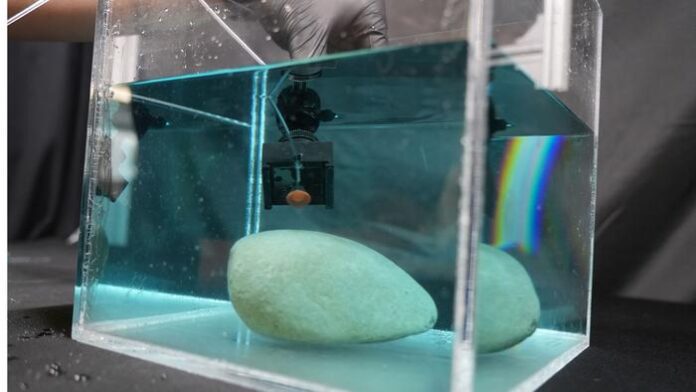My Octopus Teacher — a documentary about the smarts of cephalopods — inspired a team of engineers to create materials that can grab and release objects with rough and irregular surfaces. Those novel materials, which have many potential uses — from helping people with disabilities to better grab objects to creating robots to assist in underwater cleanup — are presented in an Advanced Science report.
Michael Bartlett, the lead investigator in the study and engineering professor at Virginia Tech, remembers one key scene from the film: an octopus sits at the bottom of the ocean but remains hidden under a pile of rocks and shells stuck to its suckers. When a diver approaches, the animal instantly releases those items and flees.
“That kind of capability where you could hold on to something strongly, but then release it almost instantly is really what got our attention about what the octopus can do,” says Bartlett.
Engineering from Octopus Grips
Bartlett’s research group often turns to nature for inspiration. His group has designed devices with flexible skins as well as adhesives mimicking those of geckos.
“Nature has a lot of very robust solutions to tackle specific kinds of problems,” Bartless says. “The way that we think about bio-inspired engineering is to really look at an organism, understand how that organism performs this function.”
The biggest challenge of moving from octopus inspiration to a grippy application involved investigating how the suckers could cling so tightly to irregular surfaces. Their earlier work with sticky-footed geckos proved they could develop materials that can cling to flat, smooth surfaces. The ability to do the same with rough and irregular surfaces proved to be a bigger challenge.
One of the many amazing facts about the octopus that helped drive this work was that the creatures have as many as 2000 suckers. Each of them can be individually controlled. The researchers zeroed in on the suckers’ structure and were soon struck by a sucker’s outer ring. They noticed a curved, flat structure there called the infundibulum.
Read More: How Could Engineered Gloves Inspired by Octopus Tentacles Help Humans?
Understanding Nature to Solve Problems
Next, the team essentially reverse-engineered that structure by designing a flexible stalk with tips made of a membrane that can quickly change shape. In experiments, researchers constructed piles of rocks of different shapes, sizes, and textures on the floor of a water-filled aquarium.
The success of the material validates Bartlett’s nature-inspired engineering efforts.
“If we can understand the mechanisms that nature is using, that allows us to better engineer and to better utilize science to create solutions to very challenging problems,” he says.
However, as promising as the new material is, it’s still not as effective as an octopus’s tentacles and suckers.
“This is a step in the direction of creating really exciting capabilities for underwater or wet object attachment and release,” says Bartlett. “But still, there’s more work to do.”
Read More: We Share Smarts with Octopuses, and Now We Know Why
Article Sources
Our writers at Discovermagazine.com use peer-reviewed studies and high-quality sources for our articles, and our editors review for scientific accuracy and editorial standards. Review the sources used below for this article:
Before joining Discover Magazine, Paul spent over 20 years as a science journalist, specializing in U.S. life science policy and global scientific career issues. He began his career in newspapers, but switched to scientific magazines. His work has appeared in publications including Science News, Science, Nature, and Scientific American.
Source : Discovermagazine












